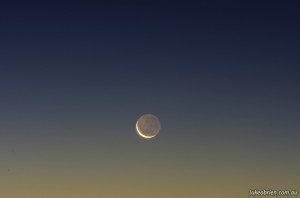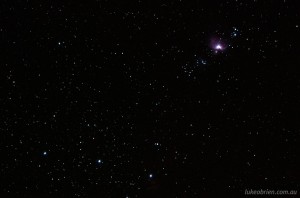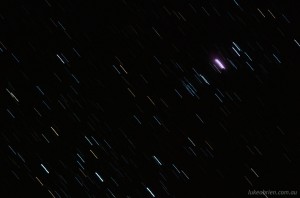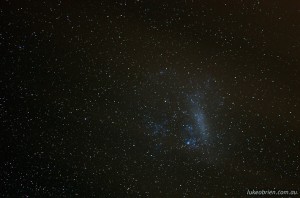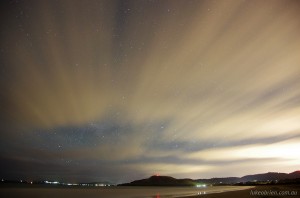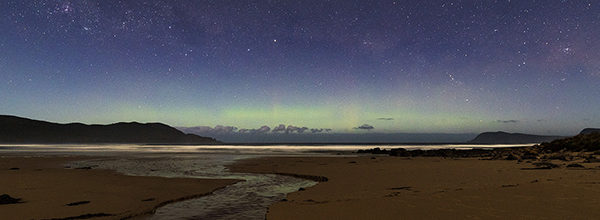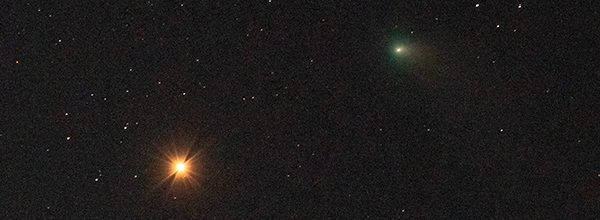Astro Photography – Pentax K5 & Astro Tracer
I recently purchased the Pentax GPS Unit O-GPS1 for the Pentax K5
, which as well as providing GPS functionality contains a rather handy little feature called “Astro Tracer”. This feature takes full advantage of the K5’s in camera shake reduction feature to literally rotate the camera’s sensor in time with the earth’s movement – as determined by the GPS data. In practical terms what this means is that rather than stars turning into long trails with a long exposure, the camera can produce a crisp and clear image of the night sky.
Plenty of people (myself included) love star trails, and you might be tempted to ask why I would want to erase/negate the star trail effect? The answer lies in deeper sky objects such as nebula and distant galaxies. These objects are literally so far from earth that they cannot be seen clearly in an image that has “trailed”. Take the first two images below, both 60 second exposures of the Orion Nebula. With the Astro Tracing feature on, the colour & detail of the nebula is clear, but when the tracer is off and the stars trail, that detail is completely lost. I definitely agree that star trails pics are spectacular in their own right, but being able to lock onto deep-sky objects and apply a reasonably long exposure without blur has, up until now, been the exclusive domain of equatorial mounts and telescope attachments. It’s great to see Pentax coming up with a unique accessory like this.
The image below required a little post processing magic. Because the camera/astro tracer locks onto the stars, a long exposure results in a blurred horizon (or indeed a blurred anything that is earth bound). The image below is therefore a 5 minute exposure to capture the cloud movement (and of course the stars as sharp pinpricks of light) blended with a second exposure I took, this time with the trace function switched off – in order to keep the horizon straight.
Apart from the wide-angle shot above, all other images were taken with a 70-200mm f2.8 Tamron lens, the longest telephoto in my kit. The mind boggles at what might be achieved with a longer lens!
